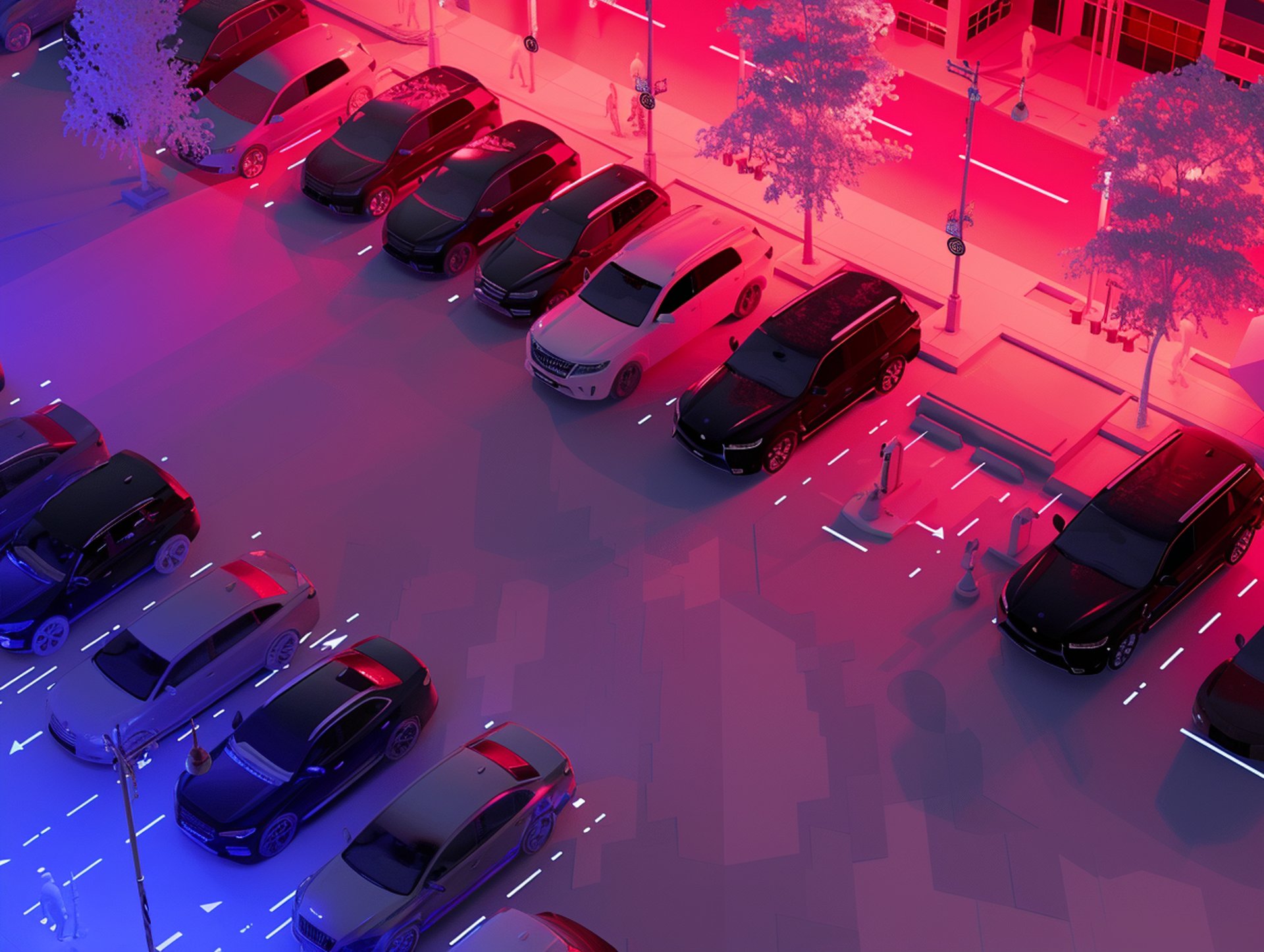
Open Market for Parking: Revolutionising Urban Mobility


Imagine pulling into a parking spot in a bustling city centre. Instead of fumbling for change or downloading another parking app, you open your favourite one, tap a few buttons, and you're on your way. This isn't a futuristic dream; it's the reality of the Open Market for Parking. This innovative model is gaining traction worldwide, offering drivers more choices, flexibility, and convenience. Let's dive into what the Open Market for Parking is, how it works, its benefits, and real-world examples of its implementation.
What is the Open Market for Parking?
The Open Market for Parking is a revolutionary approach that allows multiple parking providers to compete in the same area12345. Instead of being locked into a single provider, drivers can choose the parking app that best suits their needs, whether it's based on convenience, unique features, user experience, or value1234. This model creates an infrastructure where parking payments benefit drivers, no matter where they park12.
How It Works
The Open Market model is supported by a 'parking hub,' a technology that enables multiple phone parking providers to access all available parking inventory in a specific area456. This hub provides standardised technical and commercial interfaces, making it easier for providers to integrate their services5. Cities and operators can set rules and conditions for these providers, ensuring fair competition and quality service4.
Benefits of the Open Market Model
For Drivers
Choice and Convenience: Drivers can use their preferred parking app across different locations, eliminating the need to download multiple apps12456.
Improved User Experience: Competition among providers drives innovation, leading to better apps and value-added services124.
Seamless Integration: The model allows for additional services, such as EV charging, to enhance the overall parking experience27.
For Parking Operators
Cost Savings: Lower implementation and operating costs and increased cashless adoption lead to significant savings245.
Efficiency and Resilience: Multiple suppliers ensure service resilience and remove complex procurement processes457.
Data-Driven Decisions: Richer parking data supports local policymaking and informed decision-making257.
For Cities
Innovation and Competition: The Open Market model fosters innovation and competition, providing better services for residents and visitors12457.
Reduced Complexity: Cities can free themselves from restrictive single-vendor procurement contracts, reducing complexity and improving the customer experience17.
Sustainability: Increased adoption of cashless and digital solutions contributes to sustainability goals27.
Real-World Examples
Manchester City Council
In 2021, Manchester City Council launched the first National Parking Platform (NPP) pilot7. This initiative allowed multiple service providers to compete for motorists, offering them more choice and convenience. The pilot was a success, with more motorists paying for parking digitally. Several local authorities have since joined the scheme, including Oxfordshire, Coventry, Cheshire West, and Chester7.
Asbury Park
Asbury Park partnered with ParkMobile after visitors voiced concerns over downloading new parking apps1. The city's solution was to add more parking apps, allowing visitors to choose their preferred app. This approach aligns with the Open Market model, providing greater flexibility and convenience for drivers1.
Case Studies
Case Study 1: Manchester City Council
Challenge: Manchester City Council wanted to improve the parking experience for residents and visitors by offering more excellent choices and convenience.
Solution: The council launched the first NPP pilot, allowing multiple service providers to compete for motorists.
Results: The pilot succeeded, with more motorists paying for parking digitally. The initiative has since expanded to other local authorities7.
Case Study 2: Asbury Park
Challenge: Visitors to Asbury Park were frustrated with downloading new parking apps for each visit.
Solution: The city partnered with ParkMobile and added more parking apps, allowing visitors to choose their preferred app.
Results: This approach provided greater flexibility and convenience for drivers, aligning with the Open Market model1.
The Future of Parking
The future of parking is digital, and the Open Market model is leading the way. As more cities and parking operators embrace this model, drivers can expect a more seamless and convenient parking experience. The full roll-out of the National Parking Platform (NPP) in autumn 2024 will establish an Open Market for parking, creating a nationwide infrastructure for parking payments that benefit motorists no matter where they park23.
Emerging Trends
Integration with Mobility Services: The Open Market model allows for integrating additional services, such as EV charging, enhancing the overall parking experience27.
Data-Driven Insights: Richer parking data will support local policymaking and informed decision-making, helping cities to create more liveable and sustainable urban environments257.
Increased Competition: As more providers enter the market, competition will drive innovation, leading to better services for drivers12457.
Challenges and Solutions
Challenges
Implementation Costs: While the Open Market model offers long-term cost savings, initial implementation costs can be a barrier for some parking operators23457.
Regulatory Hurdles: Cities and operators may face regulatory hurdles when transitioning to the Open Market model23457.
Technological Integration: Ensuring seamless integration between multiple providers and the parking hub can be a technological challenge23457.
Solutions
Government Support: Government funding and support can help overcome initial implementation costs and regulatory hurdles23457.
Standardized Interfaces: Standardized technical and commercial interfaces can facilitate seamless integration between providers23457.
Pilot Programs: Launching pilot programs, such as the NPP pilot in Manchester, can help test and refine the Open Market model before full-scale implementation7.
Conclusion
The Open Market for Parking revolutionises urban mobility, offering drivers more excellent choices, flexibility, and convenience. By allowing multiple parking providers to compete in the same area, this model fosters innovation, drives cost savings, and enhances the overall parking experience. As more cities and operators embrace the Open Market model, the future of parking looks brighter than ever. So, the next time you pull into a parking spot, imagine the convenience of using your favourite parking app, no matter where you are. That future is within reach, and it's an exciting one.
FAQ Section
What is the Open Market for Parking? This model allows multiple parking providers to compete in the same area, offering drivers more excellent choices and convenience.
How does the Open Market model benefit drivers? Drivers benefit from more excellent choices, convenience, and an improved user experience. They can use their preferred parking app across different locations.
What are the benefits for parking operators? Parking operators benefit from cost savings, increased efficiency, and service resilience. The model also allows for richer parking data to support decision-making.
How does the Open Market model foster innovation? Competition among providers drives innovation, leading to better apps and value-added services for drivers.
What is the National Parking Platform (NPP)? The NPP is a parking hub that enables multiple mobile parking providers to offer their services in a single area, supporting the Open Market model.
What are some real-world examples of the Open Market model? Manchester City Council and Asbury Park are examples of cities that have implemented the Open Market model for parking.
What challenges might parking operators face when transitioning to the Open Market model? Challenges include implementation costs, regulatory hurdles, and technological integration.
How can these challenges be overcome? Government support, standardised interfaces, and pilot programs can help overcome these challenges.
What does the future of parking look like with the Open Market model? The future of parking is digital, with increased convenience, integration with mobility services, and data-driven insights.
How can cities benefit from the Open Market model? The model helps create more liveable urban environments through innovation, competition, reduced complexity, and sustainability.
Additional Resources
Author Bio
Jane Smith is an urban mobility expert with over a decade of experience in parking management and smart city initiatives. She is passionate about creating sustainable and liveable urban environments through innovative parking solutions.
